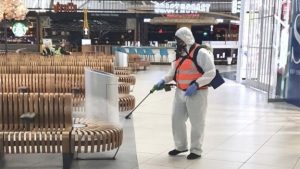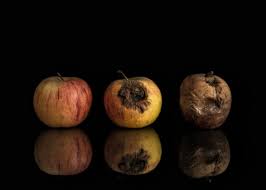Knowledge about the process of decomposition of cadavers is essential to estimate the postmortem interval, but some factors influence the decomposition process.
The estimate of IMP, considering entomology, can occur in two ways:
- observing the substrate where the oviposition was made soon after death and
- determining the age of those insects, predicting the sequence in the succession of the fauna.
Other study models consist of separating the stages of death into:
- fresh,
- putrefaction,
- dark putrefaction,
- fermentation and
- dry.
Each moment of cadaveric putrefaction offers its own conditions and characteristics.
This means that each step attracts different groups of insects. And these succeed one another in different ways during the different stages of decomposition.
The study of this succession and the recognition of the species involved in this process can help in estimating the MPI of a cadaver.
Of insects, beetles represent the most numerous described species.
These insects have gained importance in the forensic area because they are abundantly found associated with decomposing material.
In order to estimate MPI, necrophagous species are necessary.
These use decomposing organic matter as a source of protein and for oviposition.
This accelerates the putrefaction and disintegration of the body, which facilitates the study of the case, as each phase of putrefaction attracts a certain group.
Why are insects important to an investigation?
The use of forensic entomology relies heavily on biology.
Knowledge about taxonomy, biology, life cycle, succession and ecology of the studied insects is fundamental.
Insects' ability to sense odors that humans cannot feel, makes them the first arriving at a crime scene.
Or in the place where you have a dead organism, even if the decomposition is mainly done by microorganisms, such as bacteria.
The odors that are exhaled by the corpse are modified during the course of decomposition.
This change in odor becomes more or less attractive to the species.
The presence of scavenger insects on the corpse can give important clues about what happened at the place of death, such as the chronology
The entomofauna found in the cadaver, if analyzed, can provide some important information about:
a) Identity of the deceased
It can be done by obtaining the blood and tissues of the cadaver inside the insects and subsequent DNA analysis for identification.
b) Cause of death
As the speed of decomposition is influenced by some factors such as the place where the person died, it can be found out if he was killed by drowning, charring, poisoning, among other things.
c) Movement of the body
As the diversity of scavenger insects is great even within the same region, it can be deduced whether the body was moved.
This is possible from the collection and identification of adult insects, comparing them with those that are still immature.
d) Use of toxins or drugs
Toxins or drugs that are present in the decomposing body cause changes in the developmental life stages of insects that feed on organic matter.
These substances can also be identified in the insect organism.
source: pontobiologia.com.br





